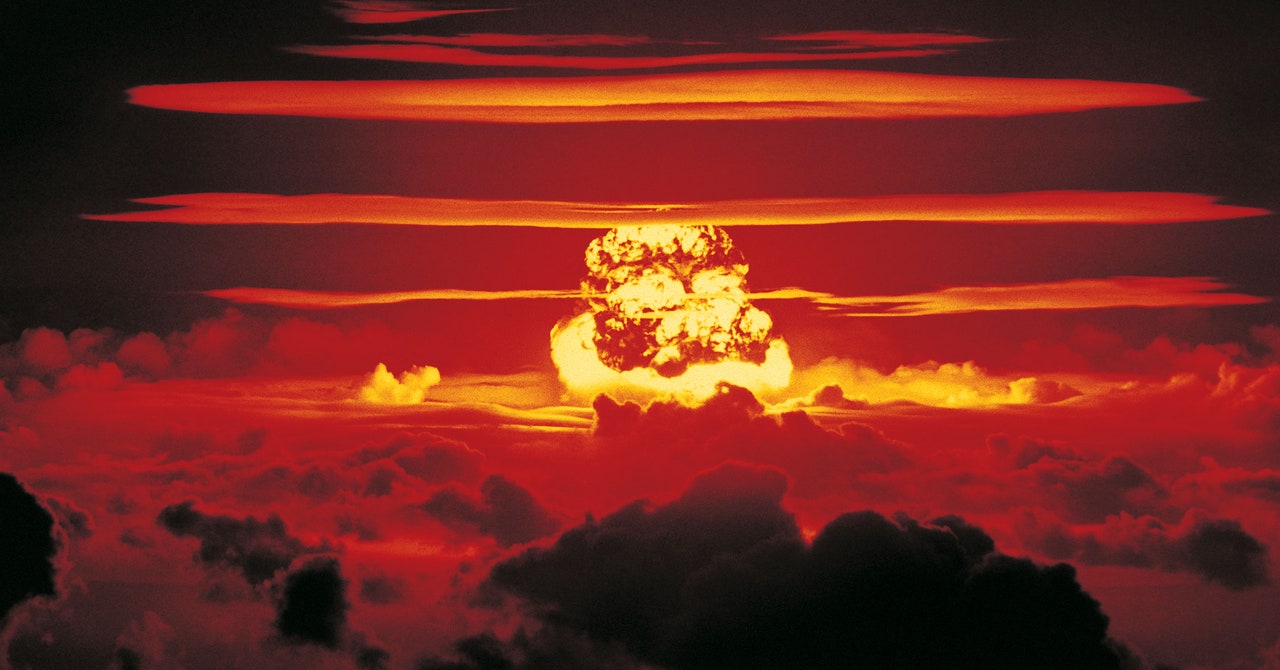
But let’s be honest: Most people, even in the moderate damage zone, won’t survive. Hardly anyone lives or works in nearly windowless reinforced-concrete buildings, nor in the vicinity of a concrete bunker. (Even people at a bank would have to get into the vault to be in the safest place; people in a subway would get the most benefit in a station that’s very deep underground.) Most people live in timber-frame or other less-armored buildings.
This shouldn’t be construed as a way to be safe in a nuclear explosion, says Dylan Spaulding, an earth scientist and nuclear expert at the Union of Concerned Scientists. Strong structures made of concrete with metal reinforcement and designed for seismic safety would survive the pressures the team modeled, he says, but those pressures would be enough to destroy most traditional, wood-framed houses and brick structures without reinforcement.
And he points out that the blast wave is only part of the story. While it is the main source of danger in a non-nuclear explosion—like the one that rocked Beirut in 2020, which was caused by a large quantity of flammable ammonium nitrate stored at the city’s port—nuclear weapons also throw out ionizing radiation and heat, followed by radioactive fallout.
Radiation exposure through the skin or inhalation can have many health effects, including skin burns, organ damage, and cancer. The range of radiation exposure could extend tens of miles from the epicenter, so people who survive the blast could later be felled by the radiation.
Drikakis’ example focused on what’s called a “strategic” nuke deployed on an ICBM, but there are also “tactical” nukes, which are dropped by a plane onto a battlefield and which blow up on the ground. Such explosions play out differently but can be as deadly and destructive, potentially exposing more people to lethal radiation doses, Spaulding says.
Russia and the US also possess so-called low-yield nukes, which have 5 to 10 kilotons of yield and are a little smaller than the 15-kiloton bomb dropped on Hiroshima. These would still inflict massive devastation and cross a dangerous red line, possibly escalating a conflict to the use of larger weapons.
Humanity’s most destructive weapons have been used in war only once, when the US demolished Hiroshima and Nagasaki, Japan, with two atomic bombs at the end of the Second World War in 1945. Together they killed more than 100,000 Japanese civilians and injured many more. And Spaulding points out that along with experiments conducted at the Nevada Test Site, they offer some of the only real-world evidence about the kinds of structures that can survive an atomic blast, and how well.
But last year Russian president Vladimir Putin insinuated that nukes are not off the table in his attack on Ukraine. While NATO leaders have not used such threatening rhetoric, the international organization conducted nuclear exercises in October, simulating dropping B61 nuclear bombs. US president Joe Biden’s Nuclear Posture Review the same month abandoned a “no first use” policy he previously supported. One could imagine nuclear risks in other conflicts too, like the possibility of North Korea using a nuke against South Korea, or Pakistan and India using them against each other.
The world’s arsenals add up to about 12,700 warheads, according to an inventory by the Federation of American Scientists. That’s fewer than their peak of around 70,000 near the end of the Cold War, thanks to arms reduction treaties. But some of those pacts have since been dissolved, and the dangers never went away, as the Doomsday Clock’s metaphor illustrates.
This is not a game, Drikakis says. The risks of a devastating nuclear strike are all too real, he says: “We have to maintain peace by understanding the risks of not maintaining the peace.”


